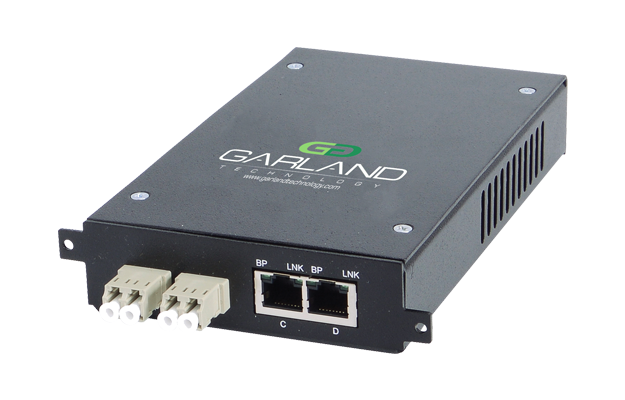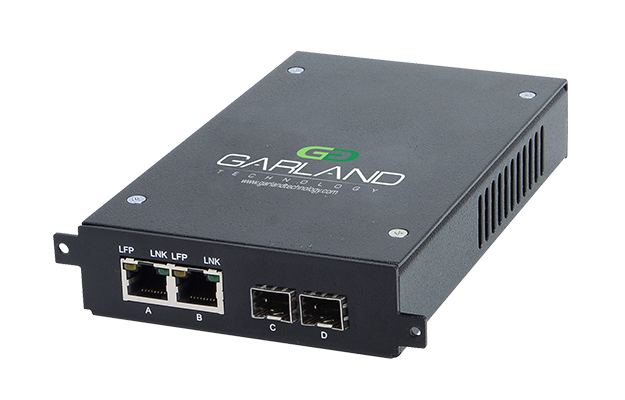

Long range, short range, and twisted pair and that’s just the 1G media connection options. There is a dizzying amount of different media types for network connectivity.
It’s easy to get lost in all of the abbreviations and definitions so we developed a quick refresher on the different types of Ethernet media types.
What happens when you have a monitoring tool that isn’t the same media type as your live connection, or visa versa? You might have a single-mode, extended-range fiber network link that stretches about 10km. But your network analyzer is sitting two feet away. Your first option might be to purchase the transceivers to match the links; however, this is an expensive and inefficient approach.
|
Name |
Media |
Network Speed |
Mode | Wavelength |
Distance1 |
|
TX |
Copper – Twisted Pair |
Up to 1000M |
n/a |
100 m |
|
SX |
Fiber Optic – Short Range |
Up to 1G |
Multi|850 nm |
550 m |
|
LX |
Fiber Optic – Long Range |
Up to 1G |
Single | 1310 nm |
5 km |
|
ZX |
Fiber Optic – Long Range |
Up to 1G |
Single | 1550 nm |
70 km |
|
SR |
Fiber Optic – Short Range |
Up to 10G |
Multi | 850 nm |
137 m |
|
LR |
Fiber Optic – Long Range |
Up to 10G |
Single |1550 nm |
5,000 m |
|
ER |
Fiber Optic – Extended Range |
Up to 10G |
Single |1550 nm |
20,000 m |
|
1 Theoretical distance is defined as half a distance stated by the 802.3 standard. |
||||
Media matching from a network TAP is a more cost-effective alternative, rather than purchasing expensive fiber transceivers. The right network TAPs can be purchased with small form-factor pluggable (SFP and SFP+) cages to assist in media conversion.
The live network is connected to one side of the network TAP, but the other side uses the SFP cage to take a mismatched cable and convert the media to the appropriate type.
 |
 |
Whether you’re dealing with copper gigabit, short-range fiber, multi-mode fiber, 10G links or any other environment, network TAPs with media conversion keep everything interoperable.
Looking to add Network TAPs to your next deployment, but not sure where to start? Join us for a brief network Design-IT consultation or demo. No obligation - it’s what we love to do!
If the inline security tool goes off-line, the TAP will bypass the tool and automatically keep the link flowing. The Bypass TAP does this by sending heartbeat packets to the inline security tool. As long as the inline security tool is on-line, the heartbeat packets will be returned to the TAP, and the link traffic will continue to flow through the inline security tool.
If the heartbeat packets are not returned to the TAP (indicating that the inline security tool has gone off-line), the TAP will automatically 'bypass' the inline security tool and keep the link traffic flowing. The TAP also removes the heartbeat packets before sending the network traffic back onto the critical link.
While the TAP is in bypass mode, it continues to send heartbeat packets out to the inline security tool so that once the tool is back on-line, it will begin returning the heartbeat packets back to the TAP indicating that the tool is ready to go back to work. The TAP will then direct the network traffic back through the inline security tool along with the heartbeat packets placing the tool back inline.
Some of you may have noticed a flaw in the logic behind this solution! You say, “What if the TAP should fail because it is also in-line? Then the link will also fail!” The TAP would now be considered a point of failure. That is a good catch – but in our blog on Bypass vs. Failsafe, I explained that if a TAP were to fail or lose power, it must provide failsafe protection to the link it is attached to. So our network TAP will go into Failsafe mode keeping the link flowing.
Single point of failure: a risk to an IT network if one part of the system brings down a larger part of the entire system.
Heartbeat packet: a soft detection technology that monitors the health of inline appliances. Read the heartbeat packet blog here.
Critical link: the connection between two or more network devices or appliances that if the connection fails then the network is disrupted.